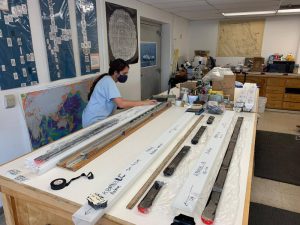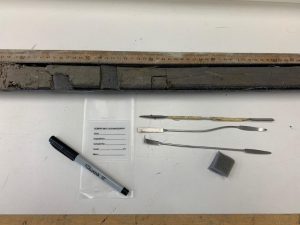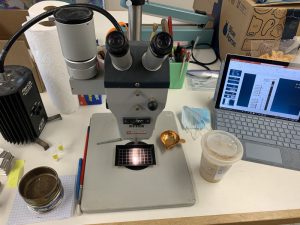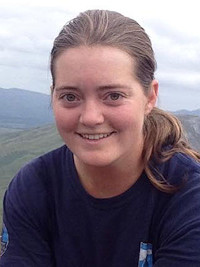
7000 Miles Away: Geoarchaeology and Landscape Research in the Middle of a Pandemic
It has been no small feat, as all of us in archaeology know, to continue archaeological research and collaboration during the COVID-19 pandemic. With the aim of keeping everyone safe and healthy, most fieldwork and travel has come to a halt. For those of us who work outside of our home countries, it has been even more difficult to plan for the future of our research. For those of us conducting research as part of the UC San Diego and the University of Haifa collaboration, this has meant shifting our focus to the archive of sediment cores that were shipped to our lab in San Diego from the other half of our team in Haifa. In-field collection and meetings became Zoom calls, and planning sessions were discussed with maps on a shared screen. The 10hr time difference had our breakfast coffees in San Diego shared with Israeli dinner. Through the hard work of our directors and each team member, we were able to continue a portion of the research that we were conducting pre-pandemic.

Fellow graduate researcher on this core, Kendall Mahoney, works in the lab amid COVID safety protocols to collect samples for Carbon-14 dating and stable isotope analysis.
These sediment cores contain a high-resolution dataset of depositional processes and environmental change along the Carmel Coast during the Holocene. The specific core that was funded through this stipend is located in the northern part of the Kebara marsh in NW Israel. The analysis of the core in 2020 allowed for preliminary conclusions to be made about cycles of drying and wetting throughout the life of the wetland. Laminations of organic-rich layers juxtaposed against paleosol and sandy layers are present throughout the core, which have allowed us to posit questions related to regional and local climate change.

Core sections were sampled and labeled to be washed and sorted for various analyses.

Once washed and sieved, samples are picked and separated under a microscope to identify the makeup of each coarse fraction.
The goal this summer was to isolate specific proxies that serve as indicators of climate, environmental, and landscape change for the area between the Carmel Ridge and the coast. Specifically, we decided to focus on pyrite as it can be an indicator of changing salinity in waterlogged areas. Understanding the environmental change in the area is crucial in tracking the wetland as a resource for communities from the Neolithic – Iron Age. The Carmel Coast is known for the intense concentration of archaeological sites from various periods of prehistory, and the data that we have compiled will only add to the ever-growing picture of life along this critical landscape. The data from this project is still being analyzed by multiple researchers, including myself, and will be presented at the ASOR 2021 Virtual Annual Meeting in December. It has been an honor to work under this funding from ASOR to continue our research in this remote world. As safe travel opens up for international research, we plan to continue adding to and analyzing the existing datasets along the Carmel Coast.

To keep up with this project (and many more) being conducted through the collaboration between UCSD and the University of Haifa and being funded by the Koret Foundation, please see our Facebook page: https://www.facebook.com/SCMAKoretProject
During the summer of 2021, ASOR supported 27 undergraduate and graduate students through the Summer Stipend Program. These students undertook non-fieldwork archaeological research projects led by ASOR-affiliated project directors. They also took part in monthly cohort group meetings hosted via zoom. Read a summary of these cohort meetings here.
Stay tuned for more updates from the 2021 Summer Stipend recipients!
American Society of Overseas Research
The James F. Strange Center
209 Commerce Street
Alexandria, VA 22314
E-mail: info@asor.org
© 2023 ASOR
All rights reserved.
Images licensed under a Creative Commons Attribution-NonCommercial-ShareAlike 4.0 International License
COVID-19 Update: Please consider making payments or gifts on our secure Online Portal. Please e-mail info@asor.org if you have questions or need help.